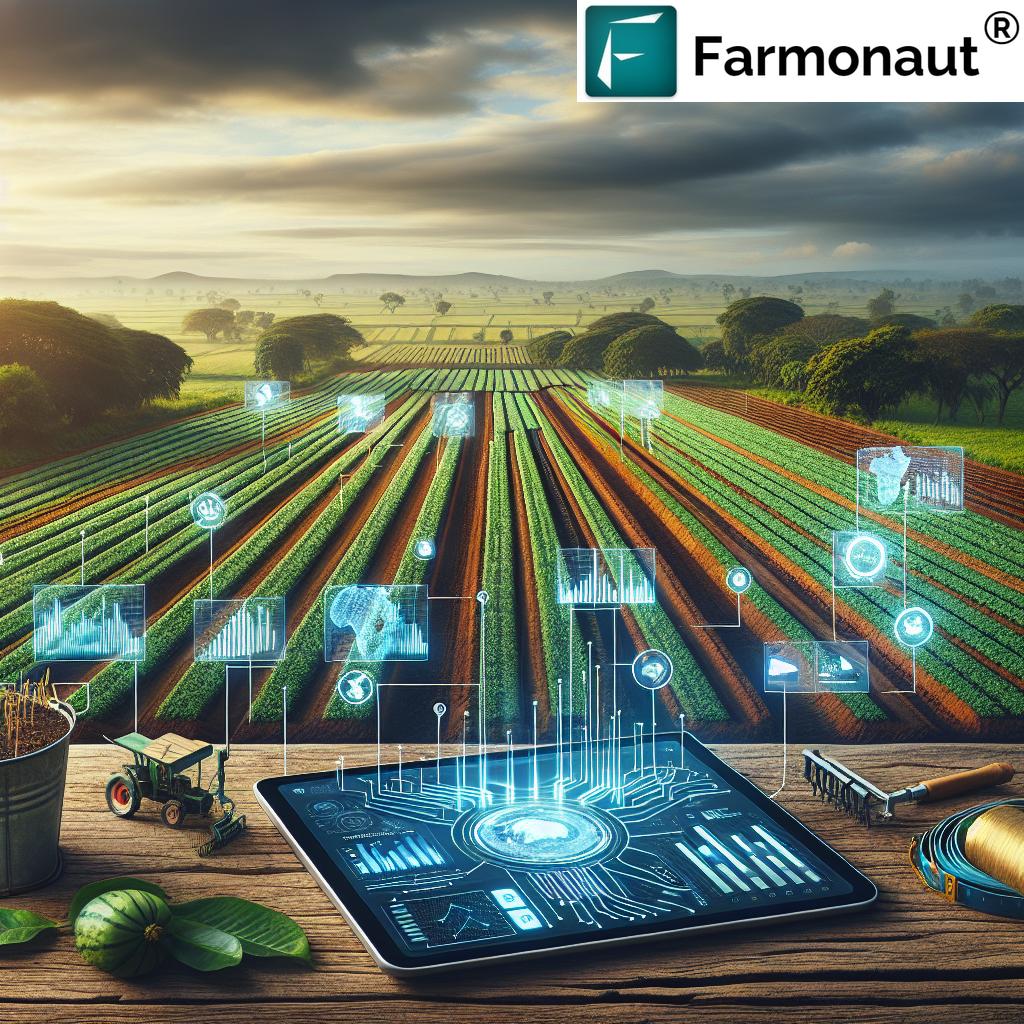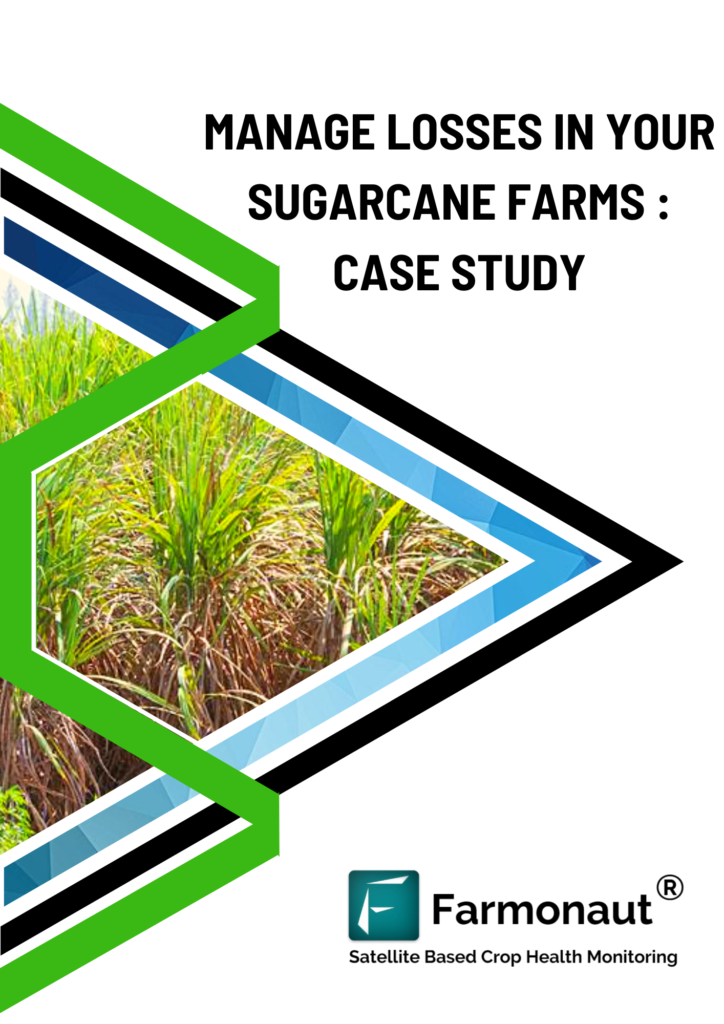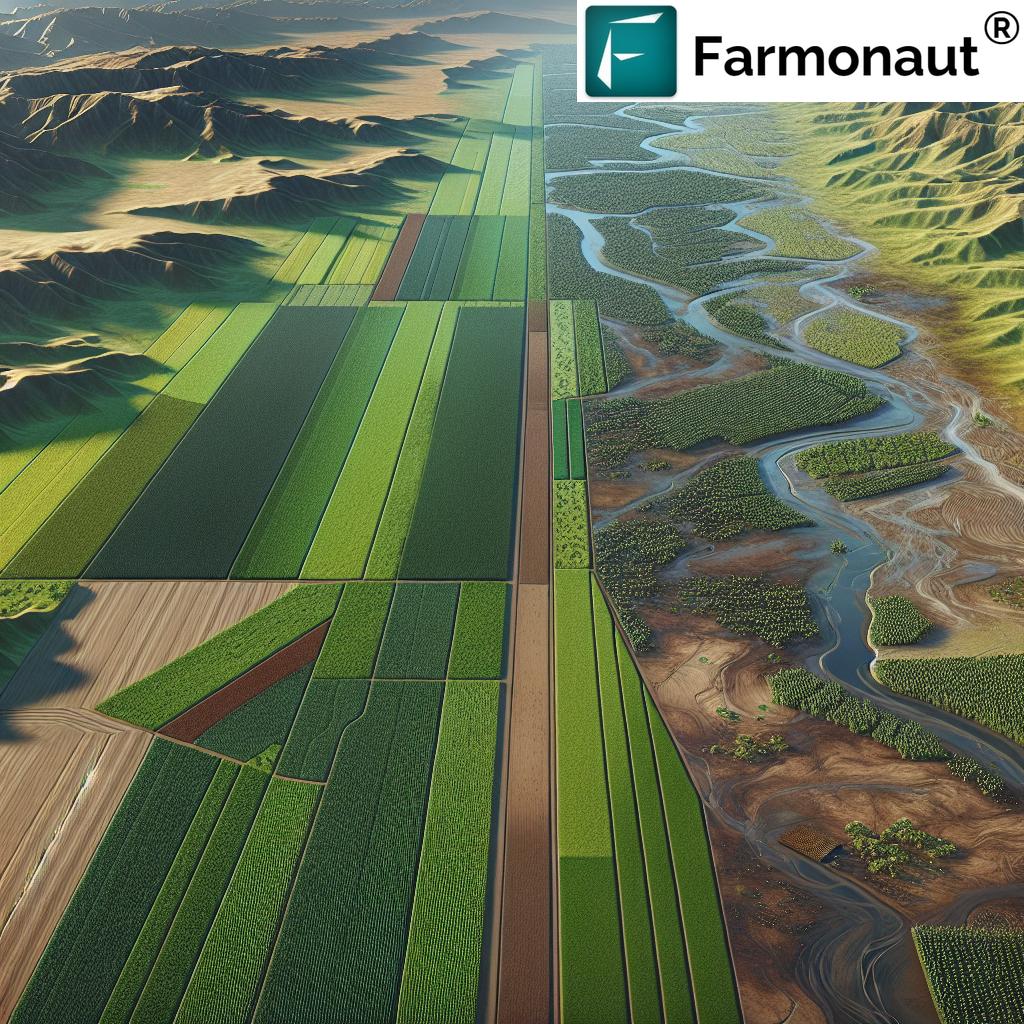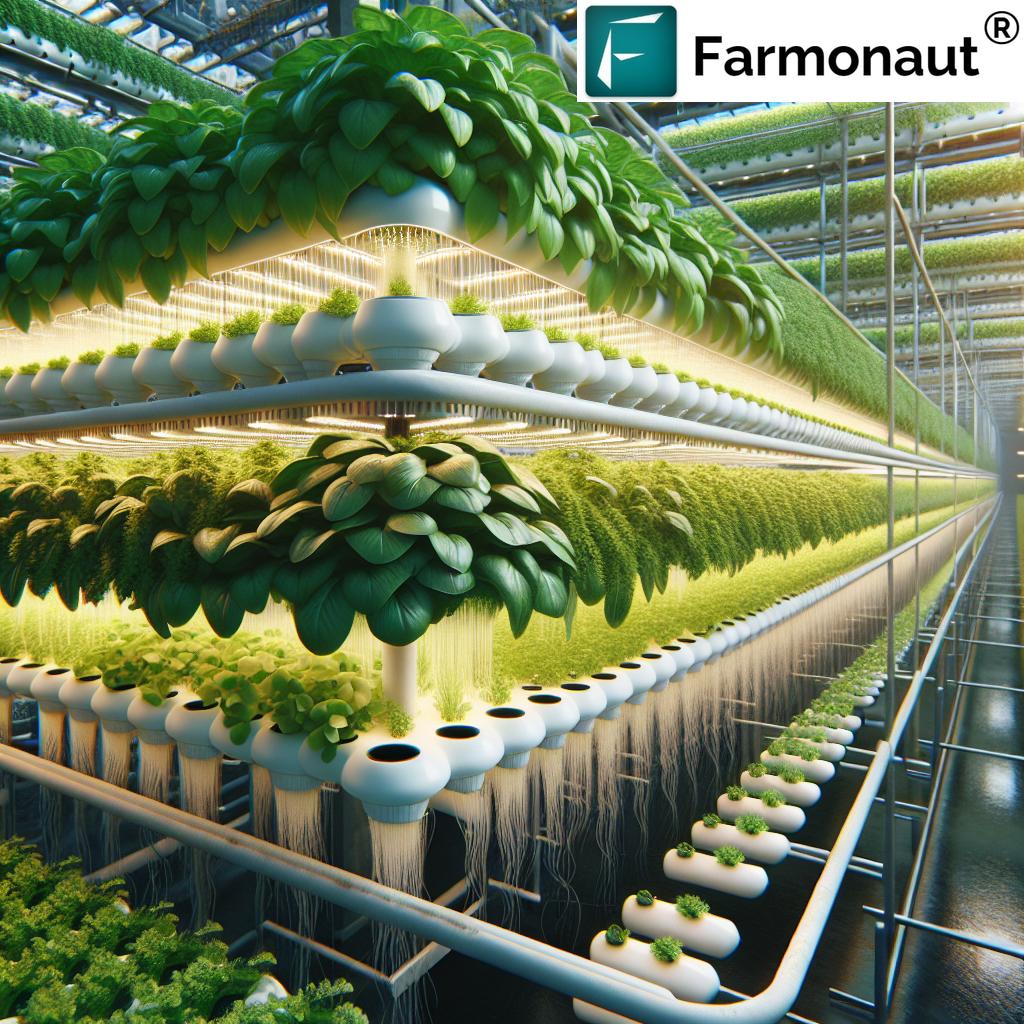What Is the Impact of Agritech on Rural Areas? Unlocking Productivity, Sustainability & Opportunity
“Agritech adoption can increase rural farm productivity by up to 30%, revolutionizing traditional agricultural practices through digital solutions.”
What Is Agritech? Understanding the Foundation
As global populations grow and the demand for food intensifies, the agricultural sector faces immense pressure to produce more, use fewer resources, and embrace sustainability. Agritech—a fusion of “agriculture” and “technology”—is at the forefront of this transformation. Leveraging innovations such as satellite imagery, IoT sensors, data platforms, blockchain, and artificial intelligence, agritech solutions for farmers are fundamentally reshaping how rural communities approach farming, resource management, and economic development.
In rural areas, where agriculture serves as the backbone of livelihoods and local economies, the integration of agritech has ushered in a new era. Digital agriculture in rural areas is not only about high-tech equipment; it’s about accessible, practical solutions that boost productivity, improve market access, promote sustainability, and unlock opportunities for millions of farmers worldwide.
1. Impact on Productivity and Efficiency
The core promise of agritech solutions for farmers is clear: enhancing farm productivity with technology. Over the past decade, we have witnessed a significant shift from traditional, intuition-driven farming to modern, data-driven practices—empowering rural farmers to make informed decisions and improve agricultural efficiency on unprecedented scales.
Precision Farming Technologies: The Game Changer
Precision farming technologies utilize GPS, smart sensors, IoT devices, satellite imagery, and drones to monitor essential farming metrics, such as:
- Soil moisture levels – preventing water wastage and optimizing irrigation schedules
- Crop nutrient levels – applying fertilizers precisely where and when needed
- Crop health monitoring – detecting pests, diseases, and stress earlier
- Weather forecasting – enabling timely planting, harvesting, and protection strategies
For example, in countries like Kenya, the adoption of smart sensors has led to water usage reductions of up to 30%, demonstrating the potential of digital agriculture in rural areas to save resources while achieving higher yields. By leveraging these insights, farmers can make data-driven decisions about when to irrigate, fertilize, or apply crop protection products, leading to higher output and lower input costs.
Farmonaut plays an essential role in this evolution. Through its advanced, affordable satellite-based farm management platform (via web, Android, and iOS apps), Farmonaut provides real-time crop health monitoring, soil moisture tracking, and AI-powered advice—enabling farmers to optimize resources, boost productivity, and embrace sustainable farming practices without expensive on-ground hardware.
Key benefits of precision agriculture with Farmonaut include:
- Optimized irrigation and water management
- Targeted fertilizer use to improve yields and reduce costs
- Timely pest and disease intervention
- Reduced resource wastage, supporting environmental sustainability
From Data to Decisions: The Role of Platforms & Advisory Tools
By integrating data platforms, AI-based advisory systems, and resource management tools, as seen with offerings from Farmonaut, rural farmers can move from guesswork to evidence-based farming practices. Decisions backed by real-time field-level data bring about:
- Yield improvements of up to 30% over traditional practices
- Reduced costs by cutting unnecessary input use
- Higher profits and improved resilience to climatic shocks
“Over 60% of rural farmers using agritech platforms report improved access to real-time market prices and weather updates.”
2. Improved Market Access & Financial Inclusion
Improving Market Access for Farmers
One of the most transformative effects of agritech in rural areas is the democratization of market access. Traditionally, rural farmers were at the mercy of intermediaries who controlled the supply chain—often resulting in unfair prices for produce and reduced profits for the primary producers.
Now, digital platforms allow us to:
- Connect directly to buyers, bypassing exploitative intermediaries
- Access real-time information on prices, demand trends, and available markets
- Ensure greater transparency and trust in transactions
- Negotiate fairer prices and maximize incomes
In India, for instance, initiatives have enabled farmers to interact with buyers and marketplaces through digital means, resulting in increased incomes and empowerment. These platforms are boosting confidence and bargaining power in rural communities.
Financial Inclusion in Agriculture
Financial services—such as loans, insurance, and savings—are now more accessible to rural farmers thanks to agritech platforms. By leveraging mobile data, satellite imagery, and digital identity verification, platforms can:
- Assess creditworthiness of farmers rapidly and accurately
- Extend satellite-verified loans & tailored crop insurance products
- Reduce fraud, streamline approvals, and minimize paperwork
For example, Farmonaut’s crop loan and insurance solutions (learn more here) use satellite verification to validate crop status and area, thus making financial products safer for banks and more accessible for rural farmers.
This expansion of financial inclusion in agriculture enables rural farmers to invest more confidently in inputs, technology, and farm improvements—fueling a virtuous cycle of increased productivity and prosperity.
3. Sustainability and Environmental Benefits of Agritech
Enabling Sustainable Farming Practices
Rural agriculture has a substantial environmental footprint, from water consumption to greenhouse gas emissions. Agritech tools designed for sustainability are playing a vital role in reducing environmental impact while guaranteeing food security:
- Precision irrigation ensures crops receive just the right amount of water, minimizing waste (example: up to 25% water savings in citrus orchards).
- Variable nutrient application reduces over-fertilization, curbing runoff and soil degradation.
- Carbon footprinting and emission monitoring (learn about Farmonaut’s carbon tracking features) help agribusinesses and farmers work toward compliance and identify improvement areas.
- Crop health monitoring limits the unnecessary use of agrochemicals and supports quick intervention during pest or disease outbreaks.
Resource Management: Less is More
Sustainable farming practices are no longer a distant goal. Today, satellite data, remote sensing, and digital farm management allow us to:
- Monitor soil and crop health efficiently
- Track usage and needs of water and nutrients precisely
- Reduce over-application of resources, saving costs, and protecting the environment
- Promote sustainable yield improvements without degrading natural assets
Such advancements are essential for protecting rural livelihoods against the realities of climate change, resource scarcity, and market pressures.
4. Economic Impacts: Job Creation & Skills in Rural Areas
Job Creation in Rural Agriculture
As the digital transformation of agriculture accelerates, new jobs are emerging at every level. Beyond traditional farming, the rural workforce now includes:
- Drone operators and data scientists managing remote field monitoring
- Agronomic advisors providing expert recommendations to farmers
- Technicians maintaining and troubleshooting precision equipment
- Supply chain and logistics experts optimizing farm-to-market connections (fleet management solutions support agribusinesses by reducing costs and improving delivery)
This new skill development is empowering rural communities by increasing earning opportunities, encouraging youth participation, and reducing migration from villages to cities.
Skill Development and Digital Literacy
Digital literacy has become a crucial skill in modern rural agriculture. From navigating digital apps and interpreting crop health data to utilizing blockchain for supply chain transparency (Farmonaut’s traceability solutions ensure transparency and trust in agri-supply chains), rural workers are upskilling to thrive in a digital future.
Training initiatives, community-based programs, and accessible digital platforms are pivotal for promoting digital equity and bridging the gap between traditional and modern agricultural practices.
5. Agritech Challenges and Solutions: Bridging the Digital Divide in Agriculture
Key Agritech Challenges in Rural Areas
- Inadequate internet and electricity infrastructure restricts the reach of digital platforms and tools.
- High up-front technology costs can deter smallholder farmers.
- Lack of digital literacy and language barriers inhibit use of advanced applications and information sources.
- Insufficient local support and training slows adoption and confidence in these systems.
For example, in some rural areas of Uttar Pradesh, unreliable network coverage makes it difficult for farmers to reliably access market updates, weather data, or digital agritech advisory services.
Bridging the Digital Divide in Agriculture
To overcome these obstacles, collaborative initiatives and targeted investments are needed:
- Community-based digital literacy training programs (especially empowering women and youth)
- Investment in rural internet, mobile, and power infrastructure
- Affordable, scalable pricing models for agritech services (such as Farmonaut’s flexible subscription packages; see below)
- Mobile-first, simple-to-use apps in local languages that lower the barrier to adoption
By bridging the gap in digital literacy and access, we ensure that agritech’s transformative impacts reach every rural community—unlocking the full potential of digital agriculture in rural areas.
6. Policy Support & Infrastructure for Agritech Adoption
The Role of Policy in Promoting Agritech
Without institutional support, the adoption of agritech in rural areas can stagnate. Governments and development agencies play an integral role by:
- Investing in rural connectivity (broadband, electricity, roads)
- Providing financial incentives and subsidies for technology uptake
- Enhancing access to credit and insurance (see crop loan products here)
- Promoting awareness and digital literacy programs for marginalized groups
- Encouraging partnerships that innovate in agri-tech and bring solutions to market quickly
Additionally, agritech companies that offer blockchain-based traceability, advanced advisory tools, and scalable remote sensing (such as Farmonaut) thrive where supportive policies remove regulatory hurdles and create an enabling ecosystem for innovation and adoption.
Comparing Agritech Solutions: Impact Table
| Agritech Solution | Estimated Increase in Productivity (%) | Estimated Cost Savings (%) | Reduction in Resource Use (%) | Challenges Addressed | Adoption Rate in Rural Areas (Estimated %) |
|---|---|---|---|---|---|
| Precision Farming (incl. Farmonaut) | 20–30% | 15–25% | 20–30% (water/fertilizer) | Inefficient input use; low productivity; yield losses | 15–18% |
| Remote Sensing / Satellite Monitoring | 12–22% | 8–15% | 10–25% (resource savings / early detection) | Crop monitoring blind spots; late disease/pest detection | 10–14% |
| Farm Management Software / Digital Advisory | 10–20% | 10–18% | 8–12% | Knowledge gaps; planning & record-keeping inefficiency | 13–16% |
| Blockchain Traceability Solutions | 5–10% | 5–12% | 3–6% (loss/fraud reduction) | Supply chain fraud; lack of transparency | 6–10% |
| AI-Based Farm Advisory (e.g., Jeevn AI) | 12–25% | 10–15% | 10–17% | Delayed decisions; lack of real-time insights | 12–16% |
*Data are estimated averages across major emerging markets; impact and adoption rates vary by region and level of technology access.
Farmonaut Subscription Plans: Affordable Precision for Every Farmer
To make precision farming accessible and scalable, Farmonaut offers flexible, subscription-based packages for individuals, agribusinesses, and government bodies. This ensures the cost barrier is minimized, unlocking the potential of precision agriculture for more rural communities.
Why choose Farmonaut? Flexible pricing enables both smallholder and large farm operators in rural areas to benefit from digital agriculture—without heavy investment in physical infrastructure. Start your journey: Access the Farmonaut App here
Farmonaut: Enabling Cost-Effective Precision Agriculture in Rural Areas
Farmonaut stands out in the agritech sector with its cutting-edge platform that integrates satellite imagery, AI-driven advisory, blockchain traceability, and fleet management—making the benefits of digital agriculture in rural areas more affordable, actionable, and scalable than ever before.
- Satellite-Based Crop Health Monitoring: NDVI and multispectral imaging uncover invisible crop stress, diseases, and moisture status—helping farmers intervene promptly and with precision.
- AI Advisory (Jeevn AI): Farmonaut analyzes satellite data and weather inputs to give real-time, personalized advisories—directly to farmers’ smartphones or browsers.
- Blockchain Traceability: Every harvest and product movement is tracked, building consumer trust and reducing fraud in agri-food and textile supply chains.
- Fleet & Resource Management: Rural agribusinesses manage their machinery, vehicles, and logistics for optimal efficiency and reduced operational costs.
- Carbon Footprinting: Monitor, report, and reduce your emissions footprint—supporting sustainability and compliance objectives in rural agriculture (see details).
The result? Farmonaut empowers rural farmers to make better decisions, achieve higher yields, reduce wastage, and contribute to a more sustainable and transparent agricultural system.
Explore Farmonaut’s Developer API: If you’re an agritech innovator or developer, integrate satellite and weather data into your system with Farmonaut’s API or dive into their developer docs for extensive guidance.
Track and manage your large-scale plantations efficiently with Farmonaut’s large-scale farm management solution.
Want to see how it works? Access the cross-platform app here, or download for Android or iOS to unlock the potential of precision agriculture on your farm today.
Frequently Asked Questions (FAQ): Agritech & Rural Impact
Q1: What is agritech and why is it important for rural areas?
Agritech refers to the application of advanced technology—including satellite imagery, IoT sensors, mobile data, and AI—into agriculture. It’s important for rural areas because it transforms traditional farming practices, improves productivity, makes resource management efficient, and promotes sustainable development.
Q2: How do precision farming technologies help rural farmers?
Precision farming technologies use real-time data to optimize irrigation, fertilizers, pest control, and harvest practices—enabling rural farmers to achieve higher yields, reduce input costs, and ensure environmental sustainability.
Q3: How has agritech improved market access and financial inclusion?
Digital platforms and mobile apps enable rural farmers to:
- Connect directly to buyers and markets
- Access real-time price and weather information
- Secure loans and insurance via satellite-based verification
This improves incomes and empowers agricultural communities.
Q4: What are the main challenges in adopting agritech in rural areas?
Challenges include limited internet and electricity infrastructure, cost barriers, and low digital literacy. Bridging these gaps requires community training, policy support, and affordable agritech solutions.
Q5: How does Farmonaut make precision agriculture more accessible?
Farmonaut offers affordable, satellite-based crop monitoring, AI advisory, and farm management solutions via web and mobile apps, enabling even small farms in remote rural areas to benefit from advanced agritech—without the need for costly onsite hardware.
Conclusion: Building a Sustainable Future Through Agritech in Rural Areas
The impact of agritech on rural areas is rapidly reshaping the agricultural landscape. By integrating innovative technologies, platforms, and data-driven tools, we are addressing core challenges such as low productivity, restricted market access, unsustainable practices, and economic exclusion. The result is a resilient and prosperous future, where digital agriculture in rural areas delivers opportunity and growth for farmers and communities alike.
However, to unlock the full potential of agritech, ongoing efforts are needed to bridge the digital divide, expand rural infrastructure, promote financial inclusion, and provide tailored support and training. Platforms like Farmonaut demonstrate that when advanced technology is made affordable, intuitive, and accessible, every rural farmer can join the digital revolution.
Embrace the future of agriculture—start leveraging precision, data, and digital platforms for a better tomorrow.
Ready to experience the Farmonaut difference?
Try the Farmonaut Platform here
For developers and business integrations: Access Farmonaut’s API and full developer documentation.
Explore module-specific solutions:
- Carbon Footprinting for reducing agricultural emissions
- Traceability to enhance supply chain transparency
- Crop Loan & Insurance access through satellite-verifiable risk management
- Fleet Management for optimized agri-logistics
- Large-Scale Farm Management via the Agro Admin App














